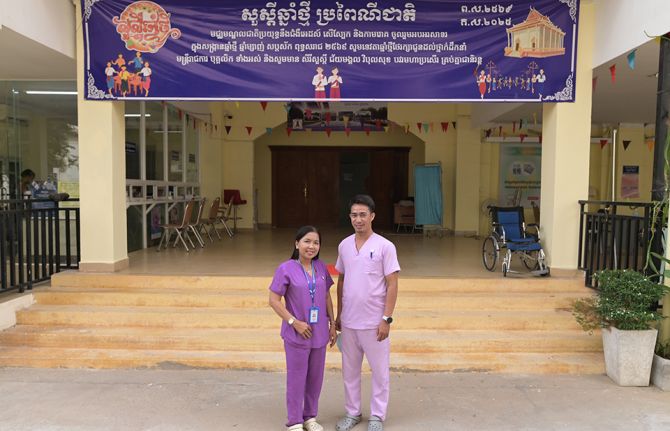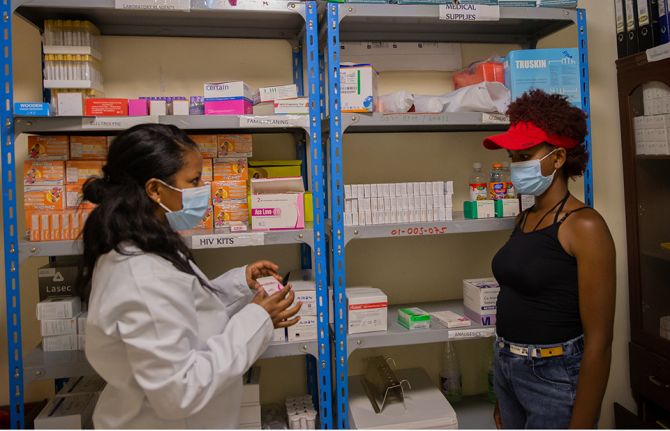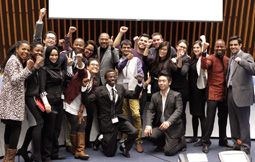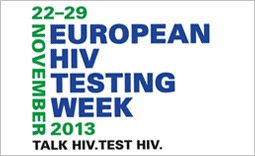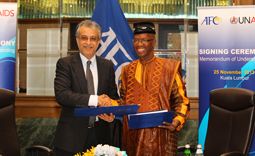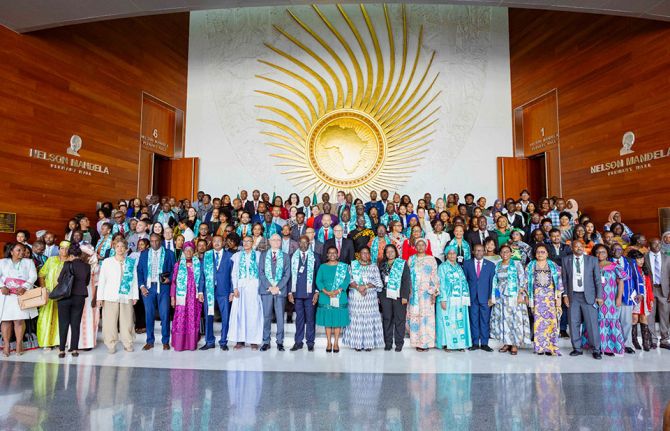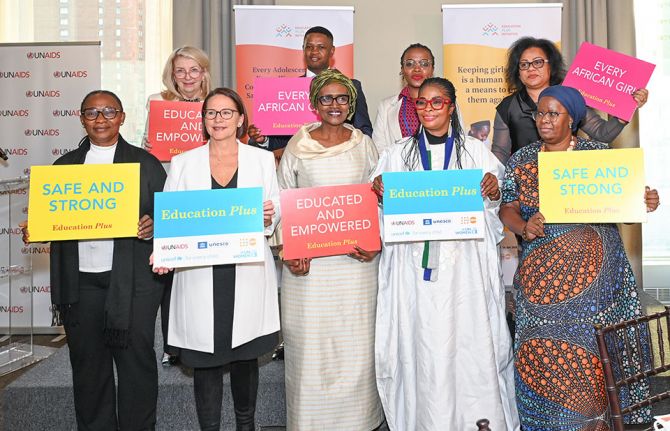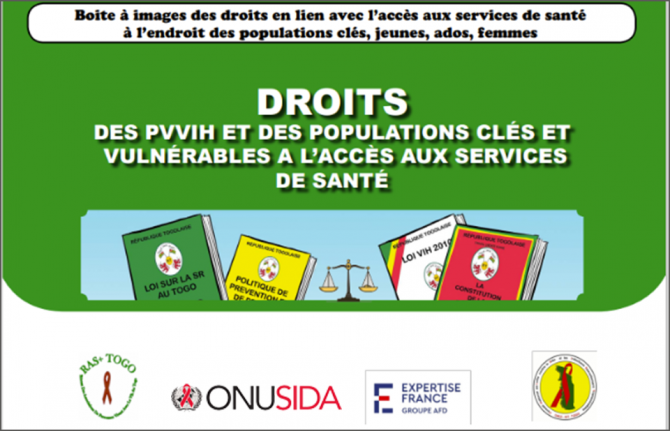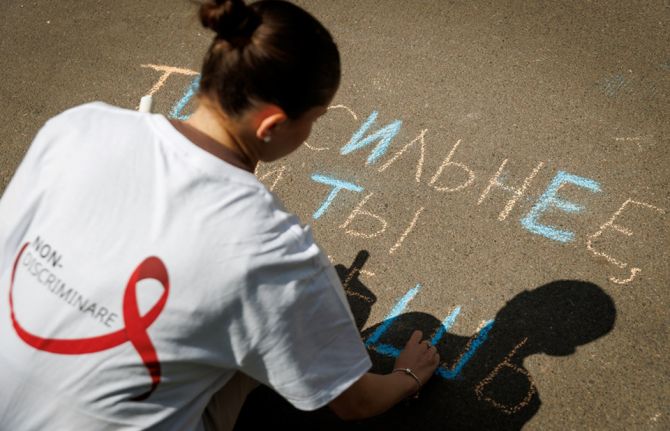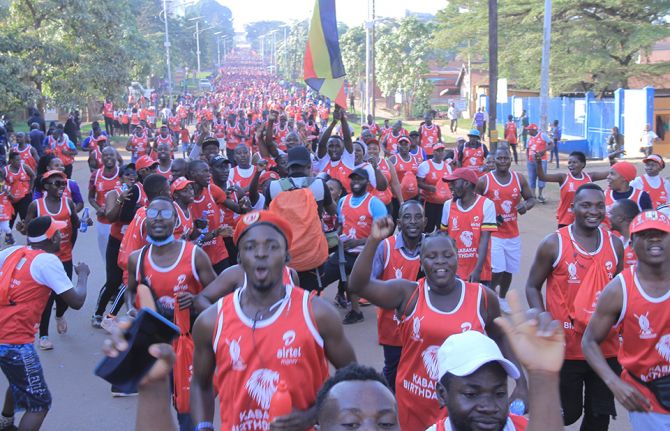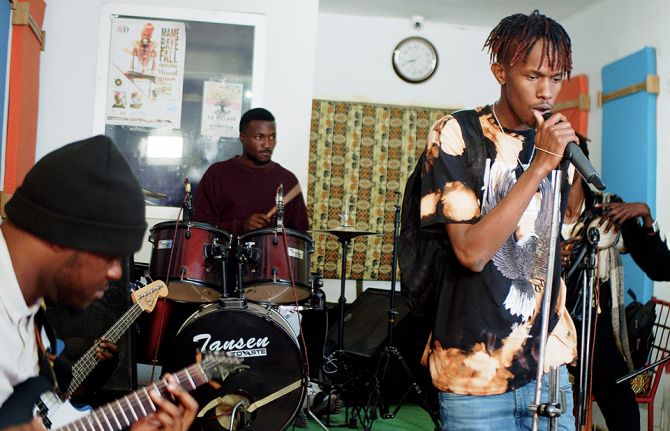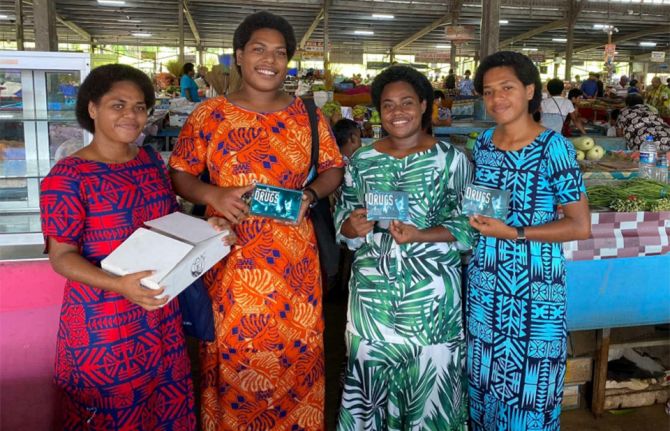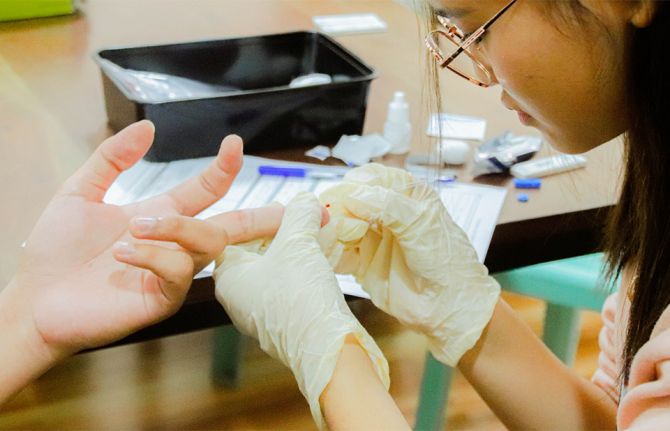
Feature Story
New HIV recommendations to improve health, reduce infections and save lives
30 November 2009
30 November 2009 30 November 2009
Credit: UNAIDS
On the eve of World AIDS Day, the World Health Organization (WHO) is releasing new recommendations on treatment, prevention and infant feeding in the context of HIV, based on the latest scientific evidence.
WHO now recommends earlier initiation of antiretroviral therapy (ART) for adults and adolescents, the delivery of more patient-friendly antiretroviral drugs (ARVs), and prolonged use of ARVs to reduce the risk of mother-to-child transmission of HIV. For the first time, WHO recommends that HIV-positive mothers or their infants take ARVs while breastfeeding to prevent HIV transmission.
"These new recommendations are based on the most up to date, available data," said Dr Hiroki Nakatani, Assistant Director General for HIV/AIDS, TB, Malaria and Neglected Tropical Diseases at the World Health Organization. "Their widespread adoption will enable many more people in high-burden areas to live longer and healthier lives."
An estimated 33.4 million people are living with HIV, and there are some 2.7 million new infections each year. Globally, AIDS is the leading cause of mortality among women of reproductive age.
New treatment recommendations
In 2006, WHO recommended that all patients start ART when their CD4 count (a measure of immune system strength) falls to 200 cells/mm3 or lower, at which point they typically show symptoms of HIV disease. Since then, studies and trials have clearly demonstrated that starting ART earlier reduces rates of death and disease. WHO is now recommending that ART be initiated at a higher CD4 threshold of 350 cells/mm3 for all HIV-positive patients, including pregnant women, regardless of symptoms.
WHO also recommends that countries phase out the use of Stavudine, or d4T, because of its long-term, irreversible side-effects. Stavudine is still widely used in first-line therapy in developing countries due to its low cost and widespread availability. Zidovudine (AZT) or Tenofovir (TDF) are recommended as less toxic and equally effective alternatives.
The 2009 recommendations outline an expanded role for laboratory monitoring to improve the quality of HIV treatment and care. They recommend greater access to CD4 testing and the use of viral load monitoring when necessary. However, access to ART must not be denied if these monitoring tests are not available.
Preventing mother-to-child transmission and improving child survival
In 2006, WHO recommended that ARVs be provided to HIV-positive pregnant women in the third trimester (beginning at 28 weeks) to prevent mother-to-child transmission of HIV. At the time, there was insufficient evidence on the protective effect of ARVs during breastfeeding. Since then, several clinical trials have shown the efficacy of ARVs in preventing transmission to the infant while breastfeeding. The 2009 recommendations promote the use of ARVs earlier in pregnancy, starting at 14 weeks and continuing through the end of the breastfeeding period.
WHO now recommends that breastfeeding continue until the infant is 12 months of age, provided the HIV-positive mother or baby is taking ARVs during that period. This will reduce the risk of HIV transmission and improve the infant's chance of survival.
"In the new recommendations, we are sending a clear message that breastfeeding is a good option for every baby, even those with HIV-positive mothers, when they have access to ARVs," said Daisy Mafubelu, WHO's Assistant Director General for Family and Community Health.
National health authorities are encouraged by WHO to identify the most appropriate infant feeding practice (either breastfeeding with ARVs or the use of infant formula) for their communities. The selected practice should then be promoted as the single standard of care.
Benefits and challenges
An earlier start to antiretroviral treatment boosts the immune system and reduces the risks of HIV-related death and disease. It also lowers the risk of HIV and TB transmission.
The new prevention of mother to child transmission (PMTCT) recommendations have the potential to reduce mother-to-child HIV transmission risk to 5% or lower. Combined with improved infant feeding practices, the recommendations can help to improve child survival.
The main challenge lies in increasing the availability of treatment in resource-limited countries. The expansion of ART and PMTCT services is currently hindered by weak infrastructure, limited human and financial resources, and poor integration of HIV-specific interventions within broader maternal and child health services.
The recommendations, if adopted, will result in a greater number of people needing treatment. The associated costs of earlier treatment may be offset by decreased hospital costs, increased productivity due to fewer sick days, fewer children orphaned by AIDS and a drop in HIV infections.
Another challenge lies in encouraging more people to receive voluntary HIV testing and counselling before they have symptoms. Currently, many HIV-positive people are waiting too long to seek treatment, usually when their CD4 count falls below 200 cells/mm3. However, the benefits of earlier treatment may also encourage more people to undergo HIV testing and counselling and learn their HIV status.
WHO, in collaboration with key partners, will provide technical support to countries to adapt, adopt and implement the revised guidelines. Implemented at a wide scale, WHO's new recommendations will improve the health of people living with HIV, reduce the number of new HIV infections and save lives.
New HIV recommendations to improve health, reduce
Cosponsors:
Publications:
Rapid advice: revised WHO principles and recommendations on infant feeding in the context of HIV(November 2009)
Rapid advice: antiretroviral therapy for HIV infection in adults and adolescents(November 2009)
Rapid advice: use of antiretroviral drugs for treating pregnant women and preventing HIV Infection in infants(November 2009)
Related

Feature Story
World AIDS Day to be marked by UNAIDS Office in Washington
30 November 2009
30 November 2009 30 November 2009In collaboration with twenty-six civil society organizations, the United Nations Development Programme (UNDP), the United Nations Office on Drugs and Crime (UNODC), the United Nations Population Fund (UNFPA), and the World Bank, UNAIDS is hosting a luncheon on 1 December which completes a policy forum series on HIV, human rights and key at-risk populations.
In recent months UNAIDS has hosted leaders from around the world in Washington, DC to discuss the human rights issues of addressing HIV in three key at-risk populations: men who have sex with men on 16 September; sex workers on 15 October; and people who inject drugs on 12 November. A representative from each population will address human rights and universal access. Civil society representatives will present recommendations to the United States government. U.S. Representative Jim McDermott (Washington State) will give special remarks.
Related
 A tribute to Maeve Kennedy Townsend McKean
A tribute to Maeve Kennedy Townsend McKean

09 April 2020
 UNAIDS is awarded the Science and Medicine Award at the 25th Annual Steve Chase Awards
UNAIDS is awarded the Science and Medicine Award at the 25th Annual Steve Chase Awards

12 February 2019
 AIDS care in the Californian desert
AIDS care in the Californian desert
12 February 2019

Feature Story
2009 World AIDS Day statements
30 November 2009
30 November 2009 30 November 20091 December 2009 marks the 21st anniversary of World AIDS Day. The theme for this year is "Universal Access and Human Rights".
To mark the day, the United Nations Secretary General, the Executive Director of UNAIDS Secretariat and Heads of UNAIDS Cosponsors and partners speak out in special World AIDS Day statements.
|
United Nations Secretary General, |
||
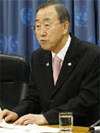 "On World AIDS Day this year, our challenge is clear: we must continue doing what works, but we must also do more, on an urgent basis, to uphold our commitment to reach universal access to HIV prevention, treatment, care and support by 2010." Read the UN Secretary General's message en | es | fr | ru | ar | ch |
||
|
|
||
|
UNAIDS Executive Director |
||
|
Press play to start |
||
| "AIDS provides a powerful mechanism for creating integrated health, human rights and development programmes. We must take AIDS out of isolation and create a broad social movement that will accelerate progress toward the Millennium Development Goals." Read the UNAIDS Executive Director's message (en | es | fr | ru ) |
||
|
|
||
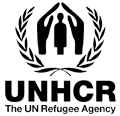 |
Message from the High Commissioner for World AIDS Day 2009 |
|
|
|
||
 |
UNODC Executive Director Read the full message |
|
|
|
||
 |
Director-General of UNESCO Irina Bokova “When looking at how all of us can maintain and strengthen our engagement in the AIDS response, I am fully committed that UNESCO will continue to address the social and structural factors that fuel the epidemic, including gender inequality and stigma and discrimination, and to empower young people to make healthy, informed decisions. We must build on our strengths, and move forward in concert with our partners.” Read the full statement Arabic | Chinese | French | Spanish | Russian |
|
|
|
||
 |
UNDP Administrator “The international community observes World AIDS Day each year on December 1st. On this day we focus this year on the need for effective HIV/AIDS prevention, care, treatment, and support.” Read the UNDP Administrator's message French | Spanish |
|
|
|
||
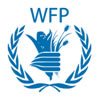 |
Chief of nutrition and HIV/AIDS, World Food Programme "Gradually it has become clear that in the developing world, better nutrition plays an important role in HIV treatment programmes – by increasing the effectiveness of the treatment." Read full statement |
|
|
|
||
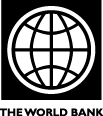 |
Director of World Bank’s Global AIDS Program "The Bank stepped up boldly with the first billion dollars for HIV a decade ago when denial and inaction were widespread. Now, the tide of the epidemic finally seems to be turning. But we are still in very deep water. Especially with much of the world still grappling with the food and financial crises, the Bank is doing the right thing in reaffirming to countries, just as each Bank president has done since 2000, that we will continue to support effective efforts to prevent and cope with HIV for as long as it takes to succeed against this virus." Read the full message |
|
|
|
||
 |
Director-General of ILO Read the full statement French | Spanish |
|
|
|
||
 |
UNFPA Executive Director “Today on World AIDS Day we extend solidarity to all people who are living with HIV and AIDS so they can live free of stigma and discrimination. And we remember and pay tribute to those who have lost their lives to AIDS.” Read the UNFPA Executive Director's message |
|
|
|
||
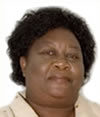 |
Special Envoy of the Secretary-General for AIDS in Africa “As women, we cannot work alone in fighting HIV. We need to support men and boys in developing positive and transformative masculinities which do not condone gender inequality and which support women’s and girls’ sexual and reproductive rights. We need to partner with men in addressing factors that fuel the epidemic on our continent such as multiple concurrent relationships, sexual violence and inter-generational and survival sex." |
|
|
|
||
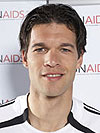 |
UNAIDS Goodwill Ambassador “Do you know that many people living with or affected by HIV don’t have access to health care, housing or even a job.
|
|
|
|
||
 |
UNAIDS Goodwill Ambassador Do you know that HIV is treatable? |
|
|
|
||
|
UNAIDS Goodwill Ambassador "Listen… |
||
|
|
||
| UNAIDS Goodwill Ambassador Salman Ahmad Message on the occasion of World AIDS Day, 1 December 2009 "In my new song, "Love Can" from my forthcoming album and book Rock and Roll Jihad, I sing the line "when you see with the heart, all the masks come tumbling down, Love can you take me back?". I believe we have to rediscover and relearn how to see the world with compassion. When we see with the heart, we see a diverse and beautiful humanity including those of us, women, children and men who are living with HIV and AIDS. Love is the way back to rediscovering that compassion. Love Can take us back." |
||
|
|
||
 |
UNAIDS Goodwill Ambassador HRH Princess Mathilde of Belgium Message on the occasion of World AIDS Day, 1 December 2009 “On World Aids Day let us renew our courage and commitment to get results |
|
|
|
||
 |
UNAIDS Goodwill Ambassador “Access for all to HIV prevention, treatment, care and support is a critical part of human rights. Violations of human rights, including stigma and discrimination increase the risk of HIV and its impact. World Aids Day 2009 invites us all to engage, care and to keep the promise. |
|
|
|
||
 |
UN Plus: UN System HIV Positive Staff Group Message on the occasion of World AIDS Day, 1 December 2009 “Today communities around world will remember the millions who have died of AIDS and speak out in solidarity with those living with HIV. While many of us, thanks to access to treatment, are able to lead full and productive lives, the global response is still not meeting the needs of the vast majority of those living with HIV. Of the almost 10 million people living with HIV in need of treatment, only around 4 million have access, and availability of second and third line therapies is still a challenge.” |
|
|
|
||
| Dr Marcos Espinal, Executive Secretary of the Stop TB Partnership Message on the occasion of World AIDS Day, 1 December 2009 “We must do more and do it now to stop people living with HIV from dying of tuberculosis. Countries need to find, prevent and treat tuberculosis in all people living with HIV and to test for HIV in all patients with TB in order to provide prevention, treatment and care. To do both they must developer collaborative programmes, nationwide, that address both diseases.” |
||
|
|
||
| Statement by UNAIDS and the European Union World AIDS Day On the occasion of World AIDS Day, 1 December 2009 “The Presidency of the European Union (EU) and the Joint United Nations Programme on HIV/AIDS (UNAIDS) welcome South Africa’s strong focus on HIV prevention and HIV testing. The EU and UNAIDS stress the need for the full respect of all human rights -- that no man, woman, boy or girl must be subject to stigma and discrimination due to his or her HIV status, sexual orientation, age, or gender.” Read full statement |
||
|
|
||
 |
Executive Director, The Global Fund to Fight AIDS, Tuberculosis and Malaria Dr Michel Kazatchkine Message on the occasion of World AIDS Day, 1 December 2009 “We have come a long way in the AIDS response with more than 4 million people now on treatment. But our gains need to be sustained. We must be concerned that in many parts of the world affected communities are still being denied their basic rights. We cannot rest when 80 countries still have homophobic laws and more than 70 countries still have travel restrictions for people living with HIV. Advancing human rights is absolutely central to the fight against AIDS and the fight for equality and for dignity must remain at the core of everything we do.” Read full statement |
|
|
|
||
 |
The Global Fund’s Ambassador for the protection of mothers and children against AIDS Carla Bruni-Sarkozy Message on the occasion of World AIDS Day, 1 December 2009 “No mother needs to die from AIDS and no child should be born with HIV anywhere in the world. We must ensure that these disparities end. These are goals that are achievable, that accelerate the pace of our efforts, and that will not only help us save lives from AIDS but, as we increasingly see, will benefit maternal and child health more widely.” Read full statement |
|
|
|
||
 |
Fight against AIDS: Francophone Parliamentary Assembly mobilized Message on the occasion of World AIDS Day, 1 December 2009 On the occasion of World AIDS Day, the parliamentary network against HIV/AIDS, which is part of the Francophone Parliamentary Assembly, calls on all francophone countries to redouble their efforts to reduce the spread of HIV, which continues to have a strong impact on these countries. Read full statement |
|
|
|
||
| Executive Director, International HIV/AIDS Alliance Alvaro Bermejo Message on the occasion of World AIDS Day, 1 December 2009 “World AIDS Day is a good opportunity to remind us to continue to show dynamic, innovative and courageous leadership. The fantastic integration between healthcare services with NGOs and faith-based organisations running home and community care programmes that I see here in Cambodia and elsewhere around the world can inspire the vision we all need. Let’s make this World AIDS Day an opportunity to recommit ourselves to continue to fight the spread and impact of HIV, and to hold governments to account for any failure to protect their citizens’ human rights.” Read full statement |
||
|
|
||
 |
Global Business Coalition on HIV/AIDS, Tuberculosis and Malaria Message on the occasion of World AIDS Day, 1 December 2009 “Our Coalition is at the heart of a movement that’s increasing impact in the fight against AIDS. We’re making global health action smarter by joining the corporate sector, governments and civil society together.” Read full statement |
|
|
|
||
 |
The Global Network of People living with HIV (GNP+) Message on the occasion of World AIDS Day, 1 December 2009 On World AIDS Day 2009, the Global Network of People Living with HIV (GNP+) is highlighting and calling for continuing support for the leadership of people living with HIV in the HIV response. For World AIDS Day 2009 GNP+ highlights four programmes that demonstrate how meaningful involvement of people living with HIV can provide significant contributions to the national and international HIV response. Read full statement |
|
|
|
||
 |
World YWCA Message on the occasion of World AIDS Day, 1 December 2008 “The latest research on women’s health indicates that lack of contraception and unsafe sex are the crucial risk factors for death and disability in women of reproductive age (15 – 49 years old). Unsafe sex can result in unintended pregnancy, unsafe abortions, reproductive complications and sexually transmitted infections (STIs) including HIV. Read the statement French | Spanish |
|
|
|
||
World AIDS Day messages from Faith Leaders
Pope Benedict XVI
"My thoughts and my prayers go with every person who has been touched by this illness, partiuculary the children, the poor and the rejected. The Church does not cease to make every effort to combat AIDS through its institutions and personnel dedicated to this task. I urge all people to offer their own contributions through prayer and concrete attention, so that those affected by the HIV virus will experience the presence of the Lord who gives comfort and hope. In conclusion, I hope that, by multiplying and coordinating these efforts, it will be possible to stop and overcome this illness."
Read full message
The Archbishop of Canterbury
Dr Rowan Williams
"We know that transmission from mother to child is now something that can be dealt with. We need to encourage all our governments to keep up their commitment to making this medical help available, and to giving that hope which we know is possible. And in all of that, the churches have a crucial role. How the Church really can be a lifesaver here. So we can pray that all our congregations will be themselves the agents of hope that they have the capacity to be."
President, Symposium of Episcopal Conferences of Africa and Madagascar
Cardinal Polycarp Pengo
"Constantly present among millions of Africans who are badly affected by the pandemic, we see how AIDS continues to ravage our populations, even if it is slipping down the agenda of governments, civil society and international organizations. At a time when official concerns about the pandemic are receding, we re-affirm theologically that the Body of Christ has AIDS, and express our pastoral determination as Family of God to provide fitting responses. For our continent is still the worst afflicted."
President and CEO, Catholic Medical Mission Board
John F Galbraith
“I am constantly amazed at the dignity, bravery and living in conditions of the people we are helping. For any one of us to be exposed to even 10% of the challenges they face on a daily basis, would probably be pretty hard and we wouldn’t handle it too well.
If you were to meet any one of those people, you would never doubt why you should be a contributor to our organisation. They are living proof of the strength and depth of the human personality.”
2009 World AIDS Day statements
Related

Feature Story
Data shows progress needed on HIV testing and treatment for children and mothers
30 November 2009
30 November 2009 30 November 2009NEW YORK/GENEVA/ BARCELONA 30 November 2009 – National efforts to combat AIDS, particularly by preventing mother-to-child transmission, are showing positive results, but many HIV and AIDS affected children still struggle to have their basic needs met, according to a report launched today by four United Nations agencies.
The report, titled Children and AIDS: The Fourth Stocktaking Report, 2009 and published jointly by UNAIDS, the UN Population Fund (UNFPA), UNICEF and the World Health Organization (WHO), features data on interventions that protect women and children from HIV and AIDS and a set of principles to guide accelerated action.
The data shows there has been significant progress in some countries in both treatment to avoid mother-to-child transmission and testing of pregnant women for HIV. Treatment to prevent mother-to-child transmission is now provided to 95 per cent of those in need in Botswana, 91 per cent in Namibia and 73 per cent in South Africa -- all countries with high HIV prevalence. Progress is particularly evident in South Africa, where coverage was risen from just 15 per cent in 2004.
“Globally, 45 per cent of HIV-positive pregnant women are now receiving treatment to prevent them passing HIV on to their children, an increase of nearly 200 per cent since 2005,” said Ann M. Veneman, UNICEF Executive Director. “The challenge is to scale up treatment in countries such as Nigeria, which is home to 15 per cent of the world’s pregnant women living with HIV.”
Children have a right to be born free from HIV. No cost is too high for saving mothers and babies. We can achieve this if we leverage the AIDS response to also strengthen maternal child health services. .
Michel Sidibé, UNAIDS Executive Director.
Currently only 10 per cent of women in Nigeria are tested for HIV and ninety percent of pregnant women living with HIV are not accessing treatments to prevent mother-to-child transmission.
The links among household poverty, maternal and child health, and HIV remain strong. However successes are evident where governments have made strong commitments to address maternal and child health – including HIV testing and treatment – and where testing and treatment have been incorporated into general maternal and child health programmes. Progress will be stronger if root causes of vulnerability to HIV, including poverty, gender inequality and sexual violence, are addressed.
"We cannot afford to be complacent," said Dr Margaret Chan, Director General of WHO. "In many high-income countries, paediatric HIV has been virtually eliminated. This shows what is possible. WHO's new recommendations on preventing mother-to-child transmission, launched today, offer an important opportunity to dramatically improve the health of mothers and children in low-income settings."
Globally pediatric treatment for HIV positive children, while still lagging behind adult treatment, has increased to cover 38 per cent of those in need -- an improvement of nearly 40 per cent in just one year. Recent evidence indicates that infant diagnosis in the first 2 months of life and early initiation of anti-retroviral treatment (ARV) can lead to significant reductions in child mortality, but the data shows that globally only 15 per cent of children born to HIV positive mothers are being tested in the first two months.
“To expand HIV testing for mothers and children, we need to tackle social barriers such as violence, stigma and discrimination, and strengthen health systems,” said Thoraya Ahmed Obaid, UNFPA Executive Director. “By providing integrated services for maternal and newborn healthcare and family planning and HIV testing, counseling and treatment, we can save and improve the lives of millions of women and children.” The situation of HIV and AIDS orphans continues to be a cause of concern, with only 1 in 8 families caring for orphans and vulnerable children receiving external help, such as medical care, financial assistance and support for education.
Another hard-hit group is women and girls aged 15 to 24. Women and girls in this age group in sub-Saharan Africa continue to account for nearly 70 per cent of all new infections among young people in the region. The report suggests that dealing with the epidemic’s drivers -- including sexual violence – means including men and boys in the response. "Children have a right to be born free from HIV," said Mr Michel Sidibé, UNAIDS Executive Director. "No cost is too high for saving mothers and babies. We can achieve this if we leverage the AIDS response to also strengthen maternal child health services."
The report shows that investments in HIV and AIDS prevention and treatment are paying off, especially for women and children. If they are sustained, and supported by commitment and sound policies, the dividends will be measured in lives saved.
The Stocktaking Report will be launched at 11:00 a.m. in the UN Secretariat on 30 November 2009, with special guest C. Virginia Fields, President and CEO of the National Black Leadership Commission on AIDS, Jimmy Kolker, UNICEF, Nathan Shaffer, WHO and Reshma Pattni, UNFPA.
Data shows progress needed on HIV testing and tre
Cosponsors:
Contact:
Kate Donovan,
UNICEF
Tel: 212 326 7452
E-mail: kdonovan@unicef.org
Richard Leonard,
UNAIDS
Tel: +1 646 666 8009
E-mail: LeonardR@unaids.org
Publications:
Children and AIDS: The Fourth Stocktaking Report, 2009 (pdf, 5.04 Mb.)
Children and AIDS: The Fourth Stocktaking Report Summary, 2009 (pdf, 782 Kb.)

Feature Story
Developing indicators on HIV-related stigma and discrimination
30 November 2009
30 November 2009 30 November 2009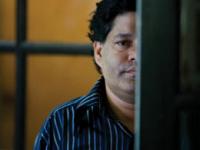
A recent review of evidence on HIV-related stigma commissioned by UNAIDS and carried out by ICRW revealed that HIV-related stigma is still pervasive and negatively affects the quality of life of people living with HIV. Credit: UNAIDS
Great strides have been made in recent years in understanding HIV-related stigma and discrimination – how to measure it and how to reduce it. However, the wide diversity of measures used to measure the causes, levels and consequences of stigma makes it difficult to compare prevalence of stigma across setting and populations. In addition, the lack of standardised indicators at the programme, national and global levels has been a significant barrier to scale up stigma reduction programmes.
To consolidate understanding of stigma and its devastating impact on peoples’ lives, UNAIDS brought together researchers, monitoring and evaluation experts, HIV-programme implementers, and people working at policy level to share lessons learnt on stigma measurement, to review existing measurement tools and to lay the ground to develop a set of common, standardized indicators on HIV-related stigma and discrimination.
“We have confirmed that while the languages and faces of stigma differ from place to place, the underlying structure is the same,” said Barbara de Zalduondo, Chief of the Programmatic Priorities Support Division of UNAIDS. “We came away convinced that there are common factors of stigma, and that we can use a variety of tools to measure these in comparable ways.”
The three day meeting was held from 23-25 November in Washington DC in collaboration with the Global Network of People Living with HIV (GNP+), International Center for Research on Women (ICRW) and the International Planned Parenthood Federation (IPPF).
A recent review of evidence on HIV-related stigma commissioned by UNAIDS and carried out by ICRW revealed that HIV-related stigma is still pervasive and negatively affects the quality of life of people living with HIV. Stigma and discrimination also act as impediments to uptake of HIV testing, treatment, and care and adherence to treatment.
The participants at the meeting agreed on the key areas that need to be measured to understand stigma associated with HIV and the layered stigma attached to sex work, injecting drug use and homosexuality and expressed enthusiasm about the meeting outcomes.
“We now have tools to understand and reduce stigma, and can move in very specific ways to support people living with HIV and will no longer speak in abstract terms,” said Kenly Sikwese, Coordinator of the PLHIV Stigma Index in Zambia.
Developing indicators on HIV-related stigma and d
Feature stories:
UNAIDS Executive Director, Yao Ming and Government launch campaign against discrimination in China (27 November 2009)
“Just like you” video campaign against stigma and prejudice launched in Brazil (17 november 2009)
Injecting drug users take central role in anti-stigma film (10 August 2009)
'Never abandon, never give up’: ILO film helps China’s migrant workers challenge AIDS stigma (30 april 2009)
Faces against HIV stigma and discrimination (01 October 2008)
People Living with HIV Stigma Index (28 august 2008)
External links:
Global Network of People Living with HIV (GNP+)
International Center for Research on Women (ICRW)
International Planned Parenthood Federation (IPPF)
Publications:
HIV-related Stigma and Discrimination: A Summary of Recent Literature (pdf, 165 Kb.)
Reducing HIV Stigma and Discrimination: a critical part of national AIDS programmes (pdf, 598 Kb.)
HIV-related Stigma, Discrimination and Human Rights Violations Case studies of successful programmes (pdf, 1 Mb.)

Feature Story
United Kingdom rollout The People Living with HIV Stigma Index
30 November 2009
30 November 2009 30 November 2009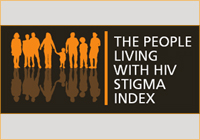
An index that documents the stigma experienced by people living with HIV in the country has been launched at the Houses of Parliament, London, United Kingdom.
Speakers at the launch included His Excellency Kenneth Kaunda, First President of the Republic of Zambia, Rt. Hon Andy Burnham MP; Secretary of State for Health, Annie Lennox, singer and founder of The SING Campaign and members of the community research team. The launch was chaired by David Borrow MP, Chairman of the All-Party Parliamentary Group on AIDS.
The UK is the first country in Europe to undertake a full rollout of The People Living with HIV Stigma Index initiative— a pioneering community research and advocacy initiative that has been developed by and for people living with HIV to measure and document how people have experienced—and been able to challenge and overcome—stigma and discrimination relating to HIV.
More than 20 other countries in Asia, Africa, Latin America and the Pacific are also working with the Index supported by an international partnership between International Planned Parenthood Federation (IPFF), in partnership with UNAIDS, the Global Network of People Living with HIV (GNP+), and the International Community of Women with HIV/AIDS (ICW). The UK initiative has been supported by the M.A.C. AIDS Foundation, UK Department for International Development and the Scottish Government.
When it comes to crying, shouting, speaking out against stigma, I have done it. But I have been struggling with the evidence to quantify it. As a researcher and as an advocate, I now have the missing link.
The programme follows similar rollouts in Bangladesh, China, Ethiopia, Fiji, Kenya, Nigeria, Pakistan, Thailand and Zambia.
Talking about the role of the index in the AIDS response, a Stigma Index Researcher in Uganda said, “When it comes to crying, shouting, speaking out against stigma, I have done it. But I have been struggling with the evidence to quantify it. As a researcher and as an advocate, I now have the missing link.”
The index aims to increase the understanding of how stigma and discrimination is experienced by people living with HIV and then use the evidence gained to shape future programmatic interventions and policy change.
Stigma and discrimination constitute one of the greatest barriers to dealing effectively with the AIDS epidemic. They discourage governments from acknowledging or taking timely action against AIDS and deter individuals from finding out about their HIV status. They inhibit those who know they are infected from sharing their diagnosis and taking action to protect others and from seeking treatment and care for themselves.
The process of empowering people living with HIV, their networks and communities is crucial. The index aims to be both a catalyst for creating and fostering change in the communities in which it is used.
The index works towards more effective communication, education and outreach about laws protecting people living with HIV in countries where it is being implemented, so that people living with HIV know their rights. Its aim is to inform policy and practice relating to human rights, confidentiality and testing, especially for young people.
The information gained from the index, collected by people living with HIV, will provide evidence for the success (or failures) of current programmes and highlight neglected areas requiring future action. These include improving workplace policies, informing debates about the criminalisation of HIV transmission, and promoting the realization of human rights.
Consequently, the index hopes to be an advocacy tool which will support the collective goal of governments, non-governmental organisations and activists alike to reduce the stigma and discrimination linked to HIV.
In its joint action for results paper, the Outcome Framework 2009-2011, UNAIDS calls the removal of punitive laws, policies, practices, stigma and discrimination that block effective
responses to AIDS and core to this collaboration “with civil society and stakeholders to uphold non-discrimination in all efforts, countering social judgement and the fear that feeds stigma.”
United Kingdom rollout The People Living with HIV
Partners:
UK Department for International Development
International Planned Parenthood Federation
Global Network of People Living with HIV
International Community of Women with HIV/AIDS
Feature stories:
UNAIDS Executive Director, Yao Ming and Government launch campaign against discrimination in China (27 november 2009)
People Living with HIV Stigma Index (28 August 2008)
External links:
People Living with HIV Stigma Index web site
Publications:
The People Living with HIV Stigma Index: User guide for teams implementing the Index in their communities
Reducing HIV stigma and discrimination: a critical part of national AIDS programmes - a resource for national stakeholders in the HIV response (pdf, 598 Kb.)

Feature Story
Taking World AIDS Day to the airwaves: Radio station 4U1AIDS
30 November 2009
30 November 2009 30 November 2009Credit: HB9ERK
To mark 2009 World AIDS Day a special amateur radio station 4U1AIDS will operate from UNAIDS Secretariat headquarters in Geneva from 1-7 December 2009 and will be broadcast all over the world via the amateur radio network. The initiative is to encourage radio amateurs all around the globe to participate in World AIDS Day.
As well as being a hobby, amateur radio is a public service which offers support during emergencies and disasters when all other communications channels (including mobile telephones, satellite) are interrupted. One of its distinctions from commercial radio is that it is not for profit and skilled amateurs operate without payment.
The amateur radio operator community is global in its reach with an estimated six million people throughout the world regularly involved. They share an interest in what is happening in the world and in reaching out to each other.
To mark this year’s World AIDS Day a special QSL card will be sent to amateur radio stations which have a radio contact with 4U1AIDS. Those contacting on any 3 amateur radio bands, will awarded a special commemorative certificate while those contacting on 5 amateur radio bands will be awarded a special commemorative UNAIDS pennant.
World AIDS Day was first marked in 1998. It is a day of remembrance, global solidarity and celebration and is an opportunity to increasing awareness about HIV in order to reduce stigma and discrimination towards people living with HIV as well as encourage HIV prevention messages.
Taking World AIDS Day to the airwaves: Radio stat
Partners:
Multimedia:
Photo Gallery (Coming soon)
Contact:
For further information, please contact:
Andrey Fedorov, UNAIDS
E-mail: FedorovAB@unaids.org
External links:

Feature Story
UNAIDS Executive Director, Yao Ming and Government launch campaign against discrimination in China
27 November 2009
27 November 2009 27 November 2009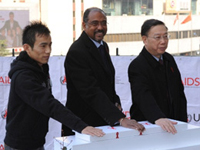
From right: Mr Huang Jiefu, Vice Minister of Health on behalf of the Government of China, UNAIDS Executive Director Mr Michel Sidibé and civil society representative jointly launched the nationwide anti-stigma campaign. Beijing, 27 November 2009.
Credit: UNAIDS/Zhou Dao
UNAIDS Executive Director Michel Sidibé and the Chinese Vice-Minister of Health, Huang Jiefu, launched a campaign in Beijing earlier today to address HIV-related stigma and discrimination. Chinese basketball star Yao Ming and a group of fans that include people living with HIV are the face of the campaign which features two videos and a poster.
Congratulating Mr Ming on his commitment to spread awareness about HIV, Mr Sidibé said, “It is an inspiration to have celebrity as famous as Yao Ming take a leadership role in addressing this issue. I hope others will follow his excellent example.”
It is an inspiration to have celebrity as famous as Yao Ming take a leadership role in addressing this issue. I hope others will follow his excellent example.
Michel Sidibé, UNAIDS Executive Director
In the campaign, Yao Ming is encouraging people in China and all over the world to help change attitudes and stop stigma and discrimination, “Like all of us, my friends who are living with HIV should have the opportunity to live full and dignified lives.”
Members from organizations of people living with HIV and other partners were also part of the launch ceremony.
People living with HIV should not be forced to live in the shadows. This data collection project has clearly shown that people living with HIV need to be part of the response to AIDS. By working together we can make a big difference.
Yu Xuan who is HIV positive and a consultant for ‘Positive Talks’
The campaign responds to findings from a recently launched China Stigma Index report that measures stigma and discrimination experienced by people living with HIV in China. The report, the first of its kind in China, surveyed more than 2000 respondents living with HIV. The data are collected by people living with HIV themselves. The survey report is the result of efforts of networks of people living with HIV and other key stakeholders including the Institute of Social Development Research of the Chinese Central Party School, the Marie Stopes International project ‘Positive Talks’ and UNAIDS. The work is part of a global project to document AIDS-related discrimination.
“People living with HIV should not be forced to live in the shadows,” said Yu Xuan who is HIV positive and a consultant for ‘Positive Talks’. “This data collection project has clearly shown that people living with HIV need to be part of the response to AIDS. By working together we can make a big difference.”
The study shows that 42% of respondents reported having faced some type of HIV-related discrimination. It also showed that 12% of respondents said they had been refused medical care at least once since they tested positive.
Dr Jiefu commented, “China has always made anti-discrimination education an important part of its response to AIDS. The Chinese government is committed to continuing to work together with the international community, including UNAIDS, and to doing more to eliminate discrimination.”
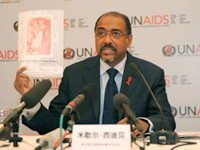
Mr Michel Sidibé, UNAIDS Executive Director presents the China Stigma Index Report at launch in Beijing, 27 November 2009.
Credit: UNAIDS/Zhou Dao
Many of the surveyed respondents said they had been refused antiretroviral treatment, refused family planning services and reproductive health services since being diagnosed HIV positive. 17% said they had been recommended by a health professional not to have children and some had been pressurised into undergoing sterilization by a healthcare professional. Some of the female respondents said they had been pressurised into terminating a pregnancy by medical staff or family planning department staff.
The China Stigma Index survey also found that one quarter of medical staff and more than one third of government officials and teachers develop more negative and discriminatory attitudes towards people living with HIV after learning of their HIV positive status.
A significant proportion of people living with HIV reported having lost their job, having been forced to leave school or move out of their home or even having found that their family members experienced discrimination in various forms, as a result of their HIV status.
China, together with India, Thailand, Indonesia, Cambodia and Papua New Guinea, is home to 82% of people living with HIV in the Asia-Pacific region.
HIV remains a formidable challenge in China with several factors fuelling the epidemic, including shame, fear, stigma and discrimination; low awareness of HIV within the general population; rural poverty; mobility; availability and affordability of prostitution; a rapidly expanding community of men who have sex with men; and injecting drug use.
UNAIDS Executive Director, Yao Ming and Governmen
Feature stories:
Michel Sidibé commends China’s progress in AIDS response (24 November 2009)
People Living with HIV Stigma Index (28 August 2008)
Publications:
The China Stigma Index Report (pdf, 350 Kb.)
Reducing HIV stigma and discrimination: a critical part of national AIDS programmes - a resource for national stakeholders in the HIV response (pdf, 1.07 Mb.)

Feature Story
Michel Sidibé meets with Li Keqiang, Vice Premiere of China
27 November 2009
27 November 2009 27 November 2009
Credit: Xinhua/Li Tao
Mr Michel Sidibé, UNAIDS Executive Director, met with Vice Premiere of the People’s Republic of China Li Keqiang in Beijing during his week long visit to the country.
"China is still confronted with a severe task of HIV prevention and treatment, although the spread of the epidemic has slowed down thanks to the joint efforts of government, professionals and the public," Li said at the meeting.
Right now there is great scope to save lives by recognizing and meeting the unique needs of those at high risk.
Michel Sidibé, UNAIDS Executive Director
Mr Sidibé said the vice premier had "showed the country's commitment to this cause," but the UNAIDS head also noted that China faces a major challenge in scaling up HIV prevention. “Right now there is great scope to save lives by recognizing and meeting the unique needs of those at high risk,” said Mr Sidibé.
In China, between 560,000 to 920,000 people are living with HIV and 97,000 to 112,000 AIDS patients at the end of 2009, according to estimates by the Ministry of Health and UNAIDS.
During the meeting, Vice Premier Mr Li also highlighted the country's efforts to step up AIDS awareness education among the public and mobilize social forces in disease prevention and control in a bid to minimize the AIDS impact
He pledged China's commitment to stronger international cooperation, saying the country will expand information and technology exchanges, share experience in prevention and treatment, shoulder international obligations and contribute to the health and security of human.
China now has 276 AIDS control programs jointly operated with more than 40 foreign governments or international organizations, involving 3.58 billion yuan in fund.
Michel Sidibé meets with Li Keqiang, Vice Premier
Feature stories:
Michel Sidibé commends China’s progress in AIDS response (24 November 2009)
UNAIDS Executive Director visit to China (23 November 2009)

Feature Story
UNDP: Bangladeshi women migrants abroad vulnerable to HIV
27 November 2009
27 November 2009 27 November 2009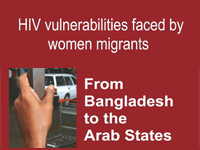
Credit: UNDP
Many Bangladeshi women migrant workers in the Arab states are subject to mandatory HIV testing and are deported if found to be living with the virus. They also often face physical and sexual abuse at the hands of their employers. These are the stark findings of a report released this week by the UN Development Programme (UNDP) and the country’s Ovibashi Karmi Unnayan Programme (OKUP).
HIV vulnerabilities faced by women migrants: from Bangladesh to the Arab States, explores the often profound health, social and economic problems experienced by many women who choose to leave their home country in search of employment, often as domestic workers.
Although migration itself is not a risk factor for HIV infection, the conditions under which some workers migrate and their living conditions in the host countries make them highly vulnerable to HIV.
Dr. Salil Panakadan, UNAIDS Country Coordinator
Migrant workers in general provide key support to Bangladesh’s economy. According to Stefan Priesner, UNDP Country Director, “The economic gains generated by migrant workers are enormous, reaching almost 9.4 % of GDP in Bangladesh in 2007.” He added, “It is, therefore, critical that good working conditions and support are provided to migrant workers throughout the migration cycle.”
The report is based on nearly 250 interviews with women migrants who shared their experiences of numerous hardships including long working hours, irregular payment of wages and physical and sexual abuse. This can lead to even greater vulnerability as women sometimes run away and find themselves open to other forms of exploitation, such as forced sex work and trafficking, clearly making them more at risk of HIV infection. Often, when they are found to be positive after involuntary testing, they are sent home.
“Although migration itself is not a risk factor for HIV infection, the conditions under which some workers migrate and their living conditions in the host countries make them highly vulnerable to HIV,” says Dr. Salil Panakadan, UNAIDS Country Coordinator. “In many cases, HIV testing in both countries of origin and host countries breaches migrants’ rights – testing is undertaken without consent, counseling, confidentiality or support.”
Shakirul Islam Lead Researcher and Chairman of OKUP also contends that vulnerability to HIV among female migrant workers is a key concern. “When analysing the unsafe conditions that Bangladeshi women face when migrating to work overseas, we found that the absence of laws and regulations in the recruitment process for migrant domestic workers and the poor working conditions they face once on site render women very vulnerable, altogether contributing to a higher risk of contracting HIV.”
He also maintains that more could be done to counter this state of affairs. “Inadequate pre-departure orientation on HIV and health vulnerabilities for departing migrants is also a big gap. Most importantly, although migrants are included in the country’s national strategic plan for AIDS, there is no national HIV response for migrant workers.”
If women migrant workers are found to be living with the virus and sent home as a result, it is argued that more needs to be done to help ensure their wellbeing. “The regional report highlights that the deportation of HIV-positive migrants by host countries and the absence of reintegration programmes in countries of origin can be devastating for the health, well-being, and livelihoods of migrants and their families,” says Caitlin Wiesen, UNDP HIV Team Leader and Regional Programme Coordinator “There is an urgent need to set up effective reintegration programmes for returning migrants and ensure their access to health services and livelihood options.”
The Arab States are the primary destination for many migrant workers from Asia, including Bangladesh. The host countries examined in the study are: Bahrain, Lebanon and UAE.
The study reveals that there is no minimum wage for Bangladeshi domestic workers either in Bahrain or in Dubai and that domestic workers in both countries are paid only around $100 a month. Such work is not covered by labour laws in either the Arab states in question or in Bangladesh itself so women migrants have no access to legal redress when abused.
“Many migrant workers….are subject to exploitation and mistreatment, and that is a worldwide problem that we are very concerned about.” says Engr. Khandaker Mosharraf Hossain, Honourable Minister for Labour, Employment, Expatriate Welfare and Overseas Employment. “Host countries and countries of origin have an equal responsibility to provide protective policies and programmes. However, progress is being made and there is more dialogue between origin and host countries which is helping us ensure that migrants’ rights are respected and protected while they are abroad.”
The Bangladesh study, forms one of the country chapters of the regional report titled: HIV vulnerabilities faced by women migrants: from Asia to the Arab states launched in March this year.
UNDP: Bangladeshi women migrants abroad vulnerabl
Cosponsors:
Feature stories:
China’s vocational schools play a key role in AIDS education (16 October 2009)
Migrant workers and HIV vulnerability in South Asian and South East Asian countries (18 May 2009)
'Never abandon, never give up’: ILO film helps China’s migrant workers challenge AIDS stigma (30 April 2009)
New report shows Asian migrant women in the Arab states have heightened vulnerability to HIV (10 March 2009)
Publications:
HIV vulnerabilities faced by women migrants: from Bangladesh to the Arab States
HIV Vulnerabilities of Migrant Women: from Asia to the Arab States
Migrants and HIV: “Far Away from Home” club
Policy Brief - HIV and International Labour Migration

